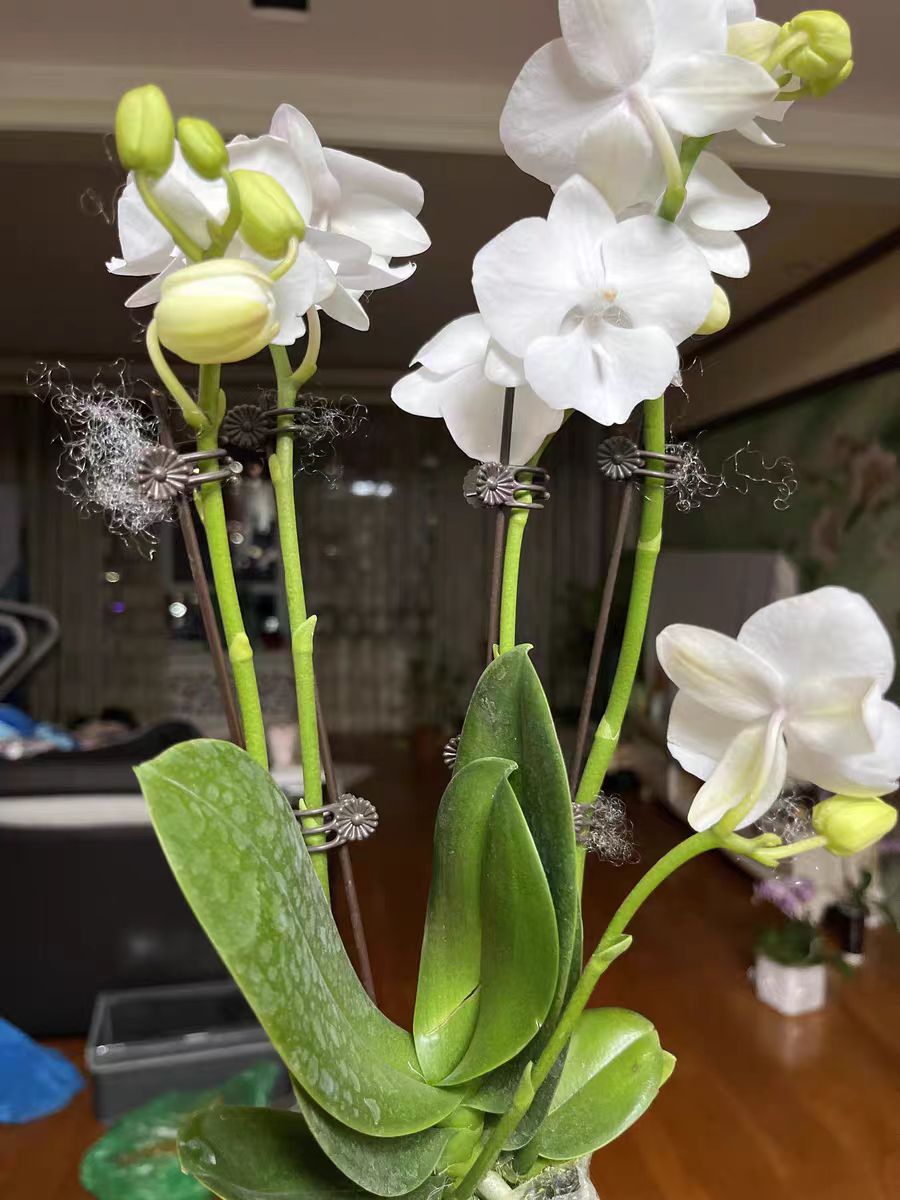When the Phalaenopsis produces a flower spike, it indicates that beautiful flowers are about to bloom. However, improper maintenance at this time may affect the quality of the flowers and the viewing period. Do you still need to fertilize Phalaenopsis after the flower spike emerges? How often should you water it after the flower spike appears? Scientifically and reasonably handling the issues of fertilization and watering plays a decisive role in the flowering quality and the length of the flowering period of Phalaenopsis.
After the Phalaenopsis produces a flower spike, its demand for nutrients increases. In order to promote the growth of the flower spike and the blooming of the flowers, fertilization is essential. However, the following points need to be noted:
Fertilizer selection: At this time, fertilizers rich in phosphorus and potassium elements should be selected, such as monopotassium phosphate, Flower Plus No. 2, etc. These fertilizers help to promote flower bud differentiation, flower blooming, and enhance the stress resistance of the plants.
Fertilization timing: Fertilization has the best effect during the vigorous growth period of Phalaenopsis. Usually, the period after the flower spike emerges is a good time for fertilization. However, it should be noted that if the plant is in a weak state or has just been repotted, fertilization is not advisable to avoid increasing the burden on the plant.
Fertilization concentration and method: When fertilizing, the fertilizer should be diluted to an appropriate concentration (for example, the ratio of monopotassium phosphate is about 1:3000). You can use the method of watering with a mixture of 1 part fertilizer and 1 part water or 1 part fertilizer and 2 parts water in the potting soil, and avoid direct contact between the fertilizer and the flower buds. At the same time, fertilization should be carried out in the morning or afternoon on a sunny day to promote better nutrient absorption by the plants.
Seasonal fertilization strategy: Spring and autumn are the vigorous growth periods of Phalaenopsis, and the temperature is suitable. At this time, an appropriate amount of fertilization should be carried out to promote the growth of the plants. When the temperature is high in summer, fertilization should be stopped, and only clean water should be given to avoid fertilizer damage. In winter, an appropriate amount of fertilization should be carried out according to the temperature and light conditions, but not too much.
Phalaenopsis likes a moist environment but is afraid of waterlogging. Therefore, the following points need to be paid special attention to when watering:
Watering frequency: After the Phalaenopsis produces a flower spike, the soil should be kept slightly moist. Usually, you can water it every 10-15 days. However, it should be noted that the watering frequency should be flexibly adjusted according to factors such as the state of the plant and seasonal changes. If the plant is in a weak state or in a dormant period, the watering frequency should be reduced.
Watering method: When watering, it is best to use a sprayer to spray mist to avoid water droplets remaining on the leaves, which may cause the leaves to rot. At the same time, watering should be avoided during the high temperature and strong sunlight at noon to reduce water evaporation and the burden on the plant.
Air humidity: In addition to watering, you can also increase the air humidity by regularly spraying water on the leaves and flower spikes. This helps to promote the smooth blooming of the flowers and prolong the flowering period.
In addition to fertilization and watering, the following maintenance suggestions should also be noted after the Phalaenopsis produces a flower spike:
Temperature and light: Keep the temperature at 20-30 degrees Celsius during the day and 15-20 degrees Celsius at night. Such a temperature difference is most conducive to the formation and blooming of flower buds. At the same time, ensure at least 4 hours of scattered light exposure per day, but avoid direct sunlight from burning the leaves.
Ventilation and pest control: Regularly open windows for ventilation or use a fan for air exchange to reduce the occurrence of diseases and pests. However, it should be noted to avoid the cold wind directly blowing on the plant, which may cause the plant to catch a cold and get sick.
Support the flower spike: As the flower spike grows, in order to prevent it from breaking or deforming, you can use a thin bamboo pole, iron wire, etc. to make an upright stake and gently fix the flower spike.
Flower picking and pruning: Timely remove the withered flowers to keep the plant neat and beautiful. If the flower spike is still in a green state, you can wait for new flowering branches to grow. After the flower spike is completely dry, cut it off from the root to facilitate reblooming.
During the maintenance of Phalaenopsis after the flower spike emerges, fertilization and watering are crucial links. By reasonably fertilizing and watering in an appropriate amount, and combining with other maintenance suggestions, you can make your Phalaenopsis bloom more beautiful flowers.
Do you still need to fertilize Phalaenopsis after the flower spike emerges?

Share with
Tagged in :




Leave a Reply